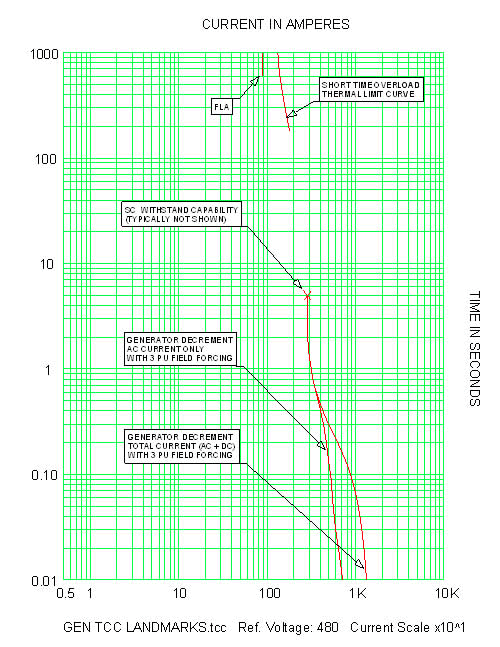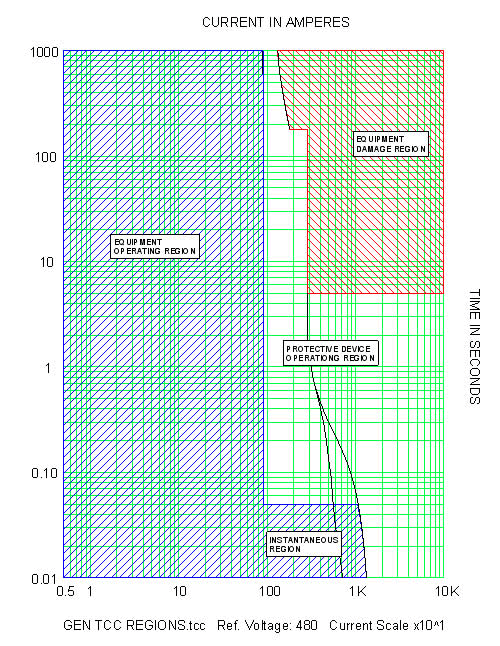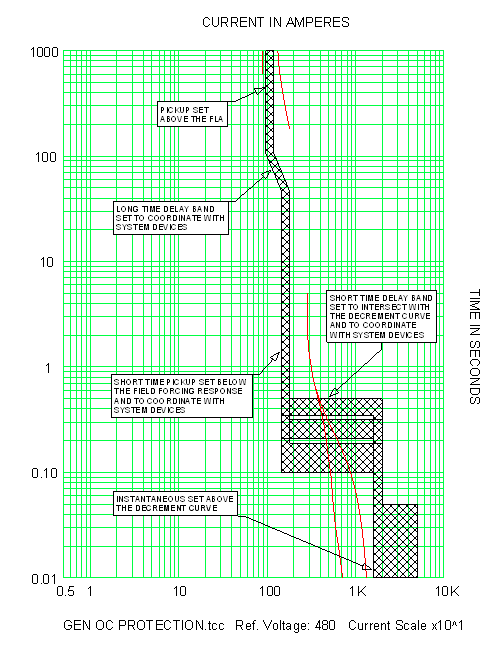Overcurrent Coordination Basics Generators |
||
| The information presented in this application guide is for review, approval, interpretation and application by a registered professional engineer only. SKM disclaims any responsibility and liability resulting from the use and interpretation of this information. Reproduction of this material is permitted provided proper acknowledgement is given to SKM Systems Analysis Inc. Purpose The purpose of this guide is to provide a basic overcurrent protection philosophy for generators. |
||
| Generator Overcurrent Protection Time current curve (TCC) landmarks (figure 1) |
||
| • Full load amps (FLA) – located in the upper decade • Overload curve – located in the upper 1 or 2 decades • Short circuit withstand capability point – located in the middle decade • Decrement curve – located in the bottom 3 decades |
||
| TCC regions (figure 2) | ||
| • Equipment operating region – located at and to the left of the FLA and the generator decrement curve in the instantaneous region of the lowest decade • Equipment damage region – located at to the right of the overload curve and short circuit withstand point, and above the decrement curve • Protective device operating region – located between the equipment operating and damage regions |
||
| Suggested overcurrent protection (figure 3) | ||
| • Set protection above the full load amps and the decrement curve in the instantaneous region of the lowest decade • Set protection below the overload curve and the short circuit withstand point • Set protection to intersect with the decrement curve in the second lowest decade |
||
| Comments | ||
| • If current penetrates the limits of the overload curve, insulation life is reduced. • If protection is set above the decrement curve, the device will never trip. |
||
 |
||
| Fig. 1 Generator TCC landmarks | ||
 |
||
| Fig. 2 Generator TCC regions | ||
 |
||
| Fig. 3 Generator overcurrent protection | ||
| References | ||
| • Other Application Guides offered by SKM Systems Analysis at www.skm.com • Electrical Transmission and Distribution Reference Book, ABB Power T&D Company, Raleigh, North Carolina, 1997 • Protective Relaying Theory and Applications, 2nd Edition, Marcel Dekker, New York, 2004 |
||
| The latest revision of: | ||
| • IEEE Std 242, IEEE Recommended Practice for Protection and Coordination of Industrial and Commercial Power Systems (IEEE Buff Book) • IEEE Std C37.102, IEEE Guide for AC Generator Protection • IEEE Std C37.101, IEEE Guide for Generator Ground Protection • ANSI C50.13, Cylindrical-Rotor Synchronous Generators • NEMA Std MG-1, Motors and Generators |
||
| back to Application guides | ||